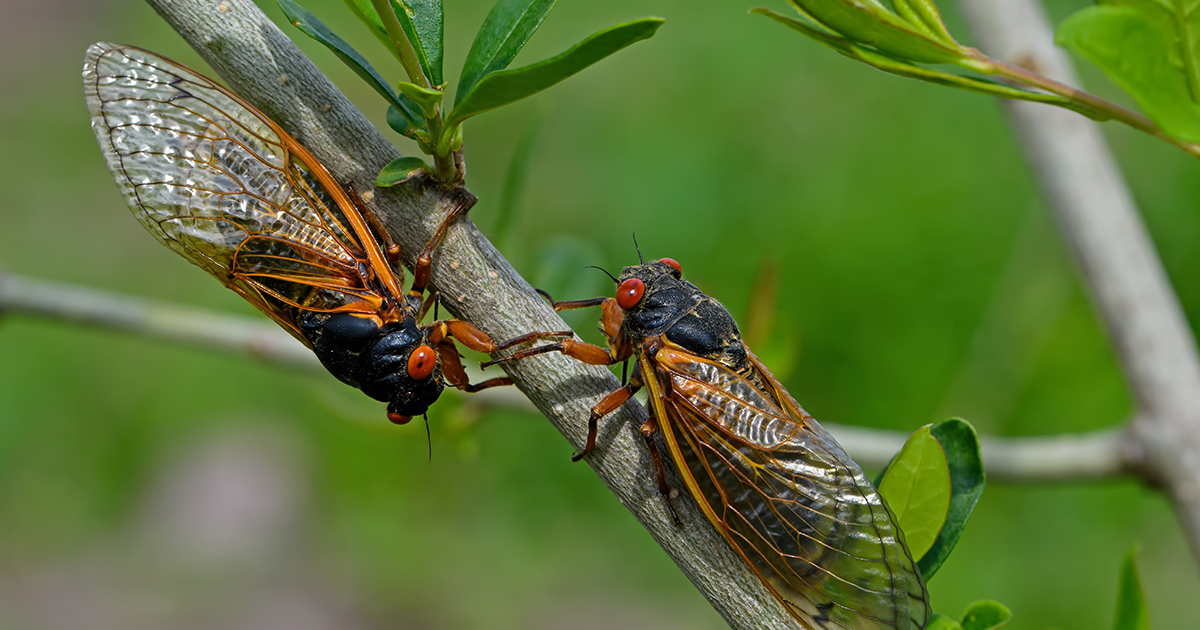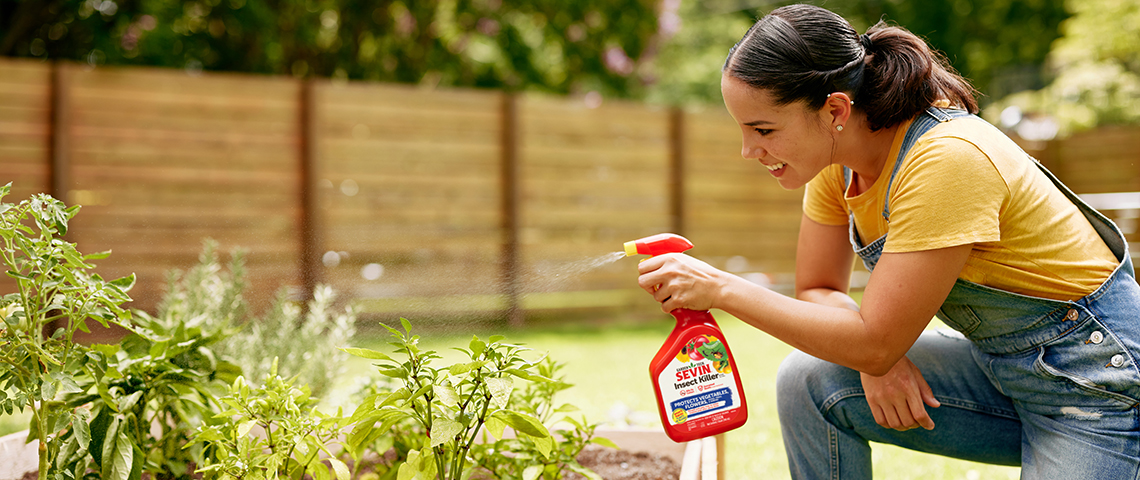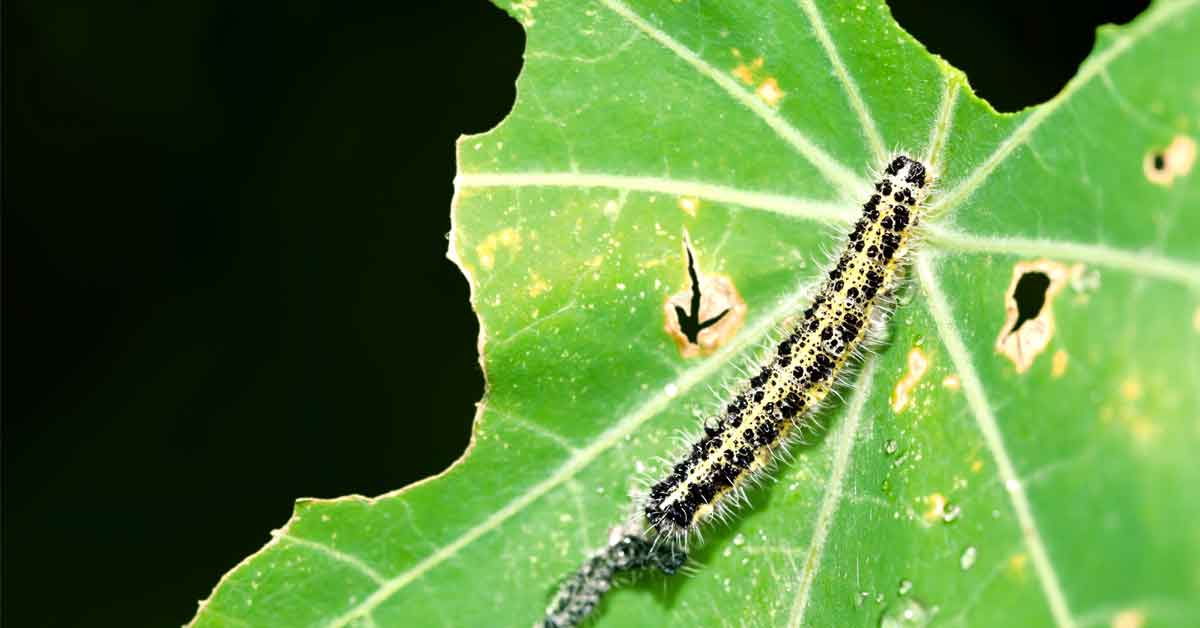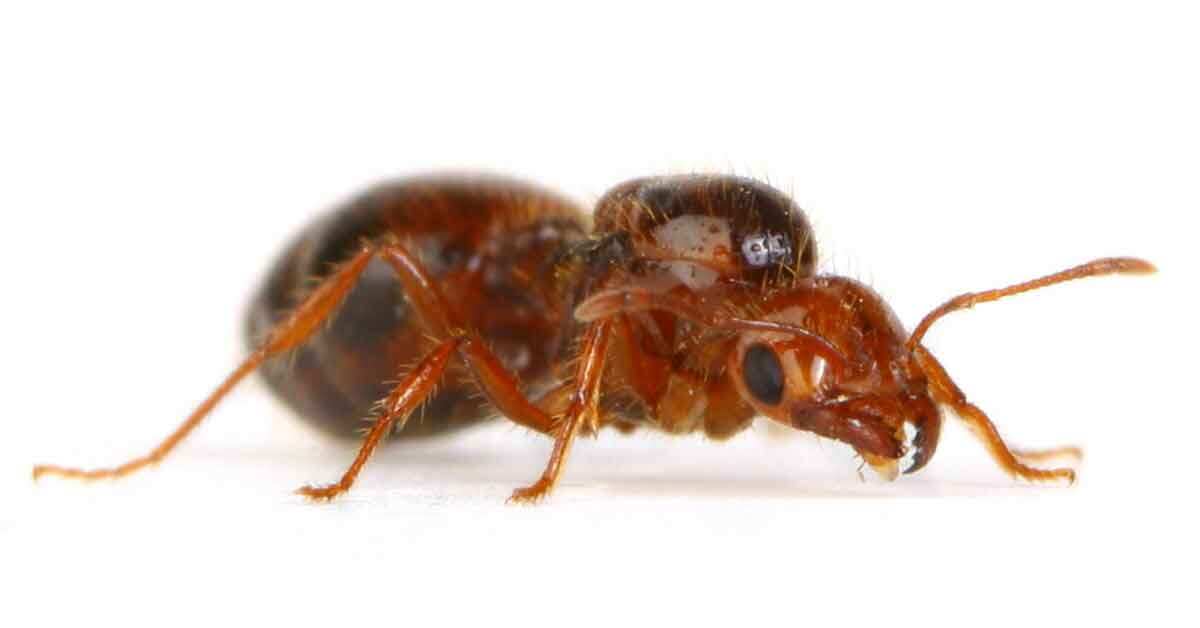How to Control and Prevent Cicadas
Spring and summer are special times to share your love of gardening, but sometimes unwelcome pests appear. Cicadas are nuisance pests that can seriously hamper your time outdoors. Cicadas spend most of their lives undetected underground as immature nymphs. But they quickly make themselves known when they emerge in late spring and summer.
Annual cicadas, also known as dog-day cicadas or dog-day harvestflies, emerge in relatively small numbers every year. But periodical cicadas mature in 13- or 17-year cycles, with large regional broods emerging across the Central and Eastern United States any given year.
When maturing cicada broods overlap or coincide, as in 2024, their nuisance status soars. Experts say billions or even trillions of periodical cicadas can emerge, blanketing outdoor spaces and replacing soothing summer sounds with mating-call roars. Outdoor time gets put on hold — not to mention a good night's sleep. To top it off, these pests may also damage ornamental plants, shrubs and trees.
- Identifying Cicadas Adults and Nymphs
- Understanding Cicada Life Stages
- Recognizing Cicada Damage
- Preventing and Controlling Cicadas
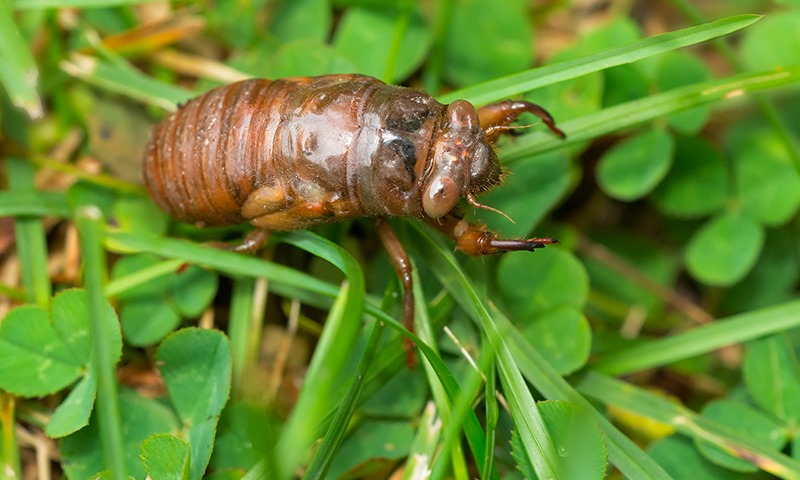
Newly emerged cicada nymphs find places to cling.
Identifying Cicadas Adults and Nymphs
Several different cicada species live in the United States. Though they have some differences, they're all unmistakably related. No other pests look quite like cicadas. Adult annual cicadas have stout, dark, green-black bodies well over an inch long. Their green-veined wings can be two to three times that length.
Adult periodical cicadas are black with large, protruding orange-red eyes and orange-veined wings. Typically smaller than annual cicadas, periodicals also have lengthy wings. Both types of cicadas often hold their wings peaked over their backs, like miniature roofs.
Cicada nymphs emerge from soil looking like wingless, dark brown versions of adults. Periodical nymphs emerge in late spring and early summer. The "dog days" of mid to late summer are prime time for annual cicada nymphs to mature.
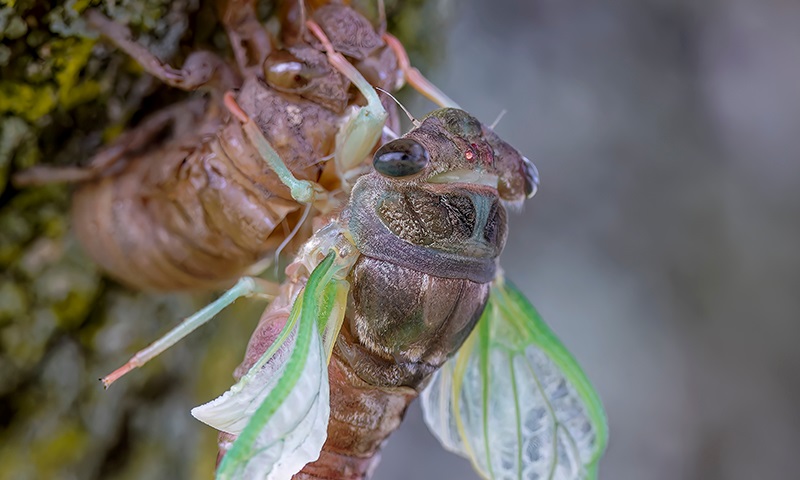
Adult dog-day cicada leave their exoskeletons behind.
Understanding Cicada Life Stages
Immature cicada nymphs live underground, feeding on plant roots. When it's time to mature, they crawl out of the ground on their pre-ordained schedule. Annual cicadas live two to five years before maturing, while periodicals stick close to 13- and 17-year cycles.
When nymphs emerge, they find a place to cling with their claw-like legs. Then their dark brown exoskeletons split down the backs, and a winged adult crawls out. The newly matured cicadas typically stay put until their wings dry enough to fly.
The empty exoskeletons are left behind — clinging to whatever the nymph chooses. When periodical broods are especially heavy, homeowners in some regions resort to shovels to clear their sidewalks, patios, steps and yards after the broods are done.
Adult cicadas only live about two to six weeks. That may not seem long until their mating calls start outside your house. Cicadas are usually loudest and most persistent during evening and nighttime hours. After mating, plant damage begins.
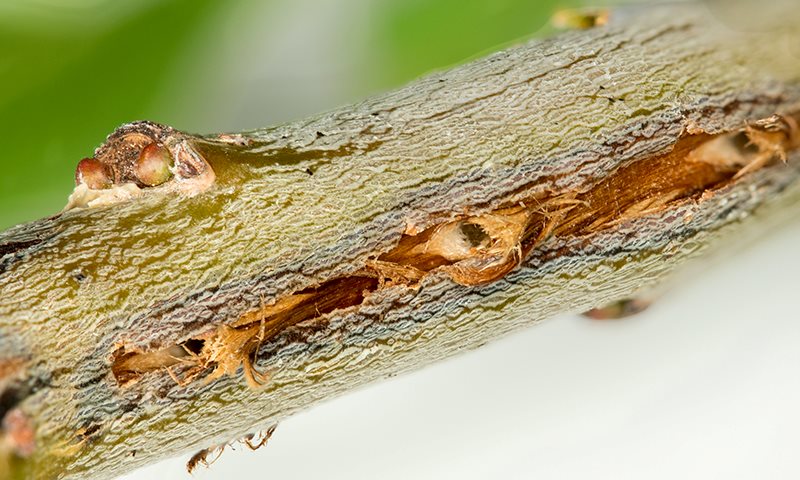
Cicadas damage twigs and branches when laying eggs.
Recognizing Cicada Damage
Cicada nymphs can stunt plants with their underground root feeding. However the worst damage comes above ground when adult females lay their eggs. Female cicadas have a strong, spear-like structure, called an ovipositor, used for depositing eggs. After mating, they use this ovipositor to slice into tree and shrub branches and insert their eggs inside.
Female cicadas favor smaller branches and twigs, so young trees and shrubs are hardest hit. Eggs hatch in branches six to 10 weeks later. Newly hatched nymphs fall to the ground, dig down and start feeding on plant roots, starting the cycle over again.
Twigs and branches that held eggs may turn brown, wilt and die. Larger trees and shrubs usually withstand the damage, albeit with some scars. But young, recently planted or stressed plants don't fare as well. &
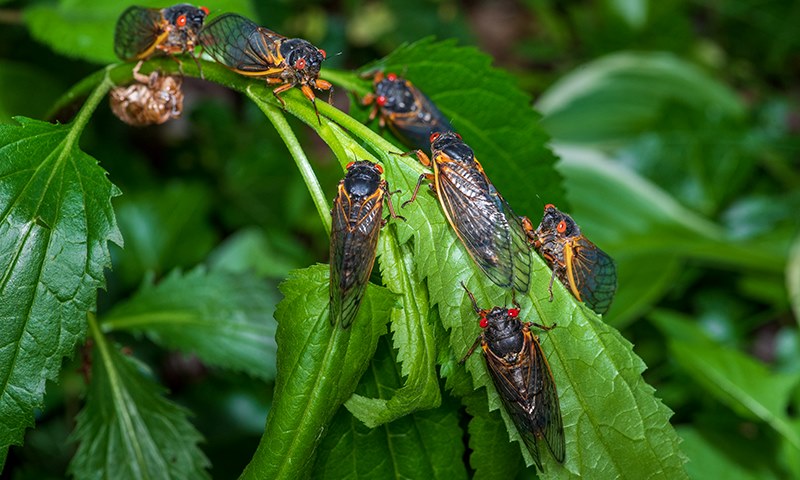
Periodical cicadas often appear in large numbers.
Preventing and Controlling Cicadas
Birds help out with cicada control, but they don't make a dent when large broods of periodical cicadas appear. Effective cicada control and prevention starts as soon as you see cicada nymphs or hear loud, buzzing calls. Turn to a trusted pest stopper to target these nuisance pests before they breed and lay eggs again.
GardenTech® brand's Sevin® Insect Killer Concentrate and Sevin Insect Killer Ready To Spray are perfect for treating small trees and shrubs, lawns, ornamental gardens and outdoor spaces. Choose Sevin Insect Killer Concentrate (designed to be diluted with water) for use in a pump-style sprayer or a watering can. For even easier application, attach the Sevin Insect Killer Ready To Spray container right to your garden hose and let it do the measuring and mixing.
Both Sevin Insect Killer Concentrate and Sevin Insect Killer Ready To Spray kill annual and periodical cicadas by contact. Then they keep controlling cicadas and more than 500* other pests for up to three months — without harming plants or blooms.
For smaller spaces and targeted treatment of periodical cicadas, turn to Sevin Insect Killer Ready To Use2 liquid to kill these pests on contact. Available in 1-quart, 1-gallon and 1.33-gallon sizes, Sevin Insect Killer Ready To Use2 kills more than 700 insect pests, as listed on the product label.
If you prefer dusts in your garden, kill periodical cicadas by contact with Sevin Insect Killer Dust Ready To Use. Sprinkle the dust lightly in a uniform layer over the target area or pest, and you're set. Whether you choose liquids or dust, your friends, family and pets can re-enter the area as soon as spray dries or dust settles.
With the help of GardenTech and Sevin brand, you can control nuisance cicadas and protect your garden, plants and peace of mind. The GardenTech team is devoted to helping you share a love of gardening and enjoy your outdoor spaces all year long.
* Except fire ants, fleas, ticks, mosquitoes.
Always read product labels thoroughly and follow instructions, including guidelines for listed plants and pests, application frequency, and pre-harvest intervals (PHI) for edible crops.
GardenTech is a registered trademark of Gulfstream Home and Garden, Inc.
Sevin is a registered trademark of Tessenderlo Kerley, Inc.
Get Monthly Gardening Advice!

